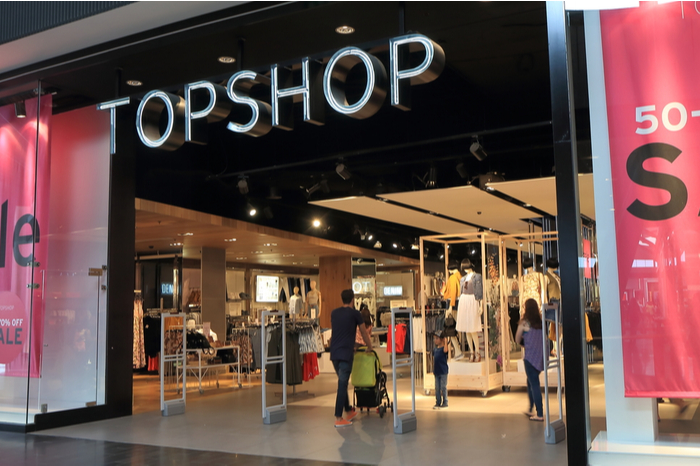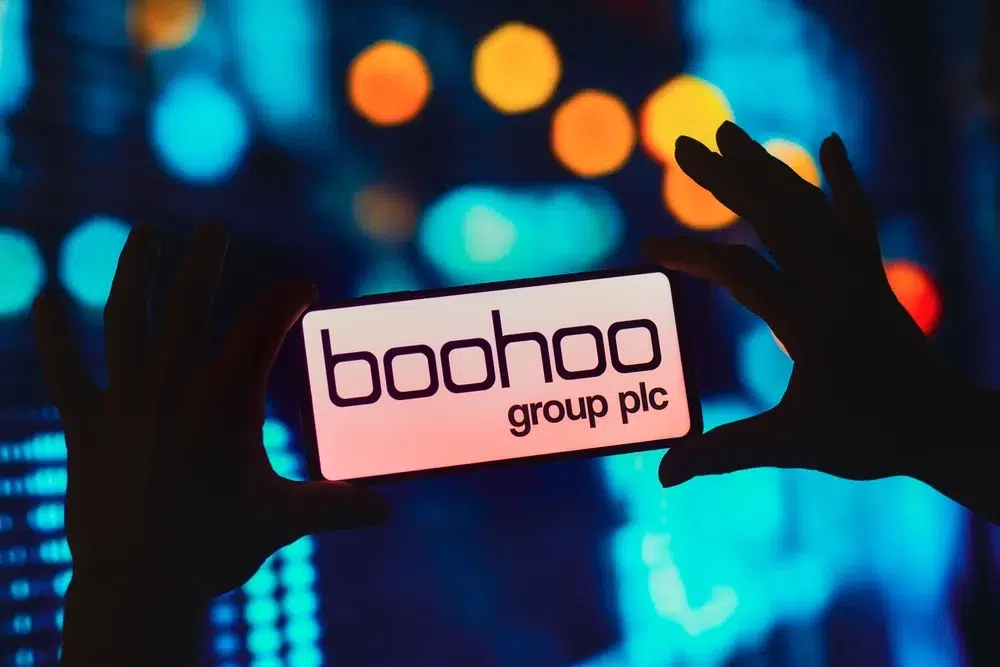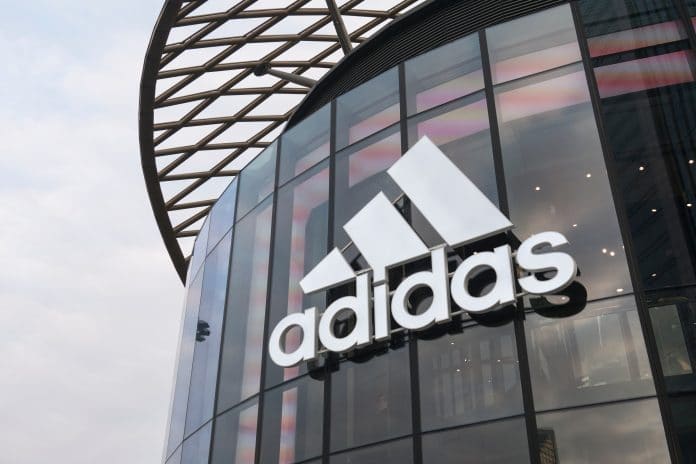Topshop fans may have felt a sense of relief after Asos snapped up the brand – along with Topman, Miss Selfridge and athleisure label HIIT. Obviously, it would’ve been a different story for the thousands of staff who lost their jobs as part the deal.
In what Asos’ PR machine dubbed a “hugely exciting moment”, the four Arcadia brands were added to the online fashion retailer’s platform in a £330 million deal on Monday. Although 300 employees will be transferred to Asos, the future of 2500 Arcadia staff remains bleak.
This is because the network of 70 Topshop, Topman and Miss Selfridge stores is not included in the deal. Like their new parent company Asos, those fascias will transform into an online-only business. Topshop’s websites will also shut down as of February 3, and customers will be directed to the Asos website.

The transaction follows the sale of Evans to Australian business City Chic on December 23 for £23 million, less than a month after Sir Philip Green’s Arcadia Group fell into administration – a move that placed 13,000 jobs and over 400 shops at risk.
Reports prepared by administrators at Deloitte at the end of November revealed that Topshop and Topman failed with gross liabilities of more than £550 million, while Arcadia’s discount brand Outfit owed £80 million.
In a January update, Deloitte said they are set to shut down another 31 of the Arcadia’s stores by the end of the month, resulting in the loss of 714 more jobs. Later that month, additional documents from Deloitte revealed that Green’s retail empire had collapsed under a debt pile of £750 million.
Following Asos’ successful bid, a key change will be the transition of Arcadia brands from private to public ownership. This means any fundamental issues in production and operations would be difficult to conceal, and Asos and Arcadia both occupy a considerable manufacturing and distribution infrastructure.
The deal marks the first time Asos has bought an outside brand and represents a shift from its previous strategy of selling own-brand items while also hosting third-party labels. Asos said the acquisition would “help accelerate our multi-brand platform strategy”.
Rival online retail giant Boohoo Group is known for snapping up struggling brands. For example, it purchased Karen Millen and Coast in a pre-pack administration deal in 2019 for £18.2 million, which saw the brands shift online as stores were closed.
However, they have not been integrated into the Boohoo platform in its entirety, with the online retailer affirming that Coast and Karen Millen would continue to target the same customer demographic and its brand handwriting will remain the same.
The same could be said for Oasis and Warehouse, after Boohoo Group acquired its online businesses and all associated intellectual property in a deal worth £5.25 million last year. And just last week, Boohoo Group acquired Debenhams’ brand and ecommerce operations out of administration £55 million, in a deal that would see the heritage department store chain shutter its remaining 118 stores for good.
Asos, by contrast, said the acquisition of the four Arcadia brands would “support its mission to become the number one destination for fashion loving 20-somethings worldwide”.
Arguably, Asos incorporates a similar target demographic to Topshop and Miss Selfridge, while Boohoo may have struggled to fit the likes of Karen Millen and Coast next to its fast fashion fascias of Nasty Gal, PrettyLittleThing and MissPap.
Either way, Asos may need to do more than simply list the Topshop and Miss Selfridge ranges on their website to ensure the £330 million deal pays off.
Kantar’s principle fashion analyst Anusha Couttigane said that unlike the Boohoo and Debenhams deal, an acquisition by Asos would not dilute the credentials of the Topshop brand.
“Asos would be a strong immediate solution for the ailing business, given its stronghold in the most relevant space for fast fashion digital marketplaces,” she said.
“The learning curve and work to make Arcadia brands both profitable and desirable would be nowhere near as steep under stewardship of the Asos mantel compared to other current proposals.”
GlobalData senior apparel analyst Chloe Collins told Retail Gazette that Asos is much more suited for Topshop and Miss Selfridge than Boohoo, as the latter generally targets a specific customer base of 16-24 year olds. Arcadia brands are more favoured by 20-year-olds and above.
“Boohoo is also more focused on driving low prices and deep promotions which would devalue the Arcadia brands’ image,” Collins said.
She added: “Boohoo has a lot on its plate now with its mission to transform Debenhams into an online marketplace, as well as its acquisition of Oasis and Warehouse last summer.
“The group would not be able to give the Arcadia brands the attention they need, whereas Asos can.”
Separately, Boohoo is currently in exclusive talks to buy Arcadia’s remaining fascias Burton, Dorothy Perkins and Wallis. Should it be successful, it would also likely see them shift online and close stores, and result in thousands more job losses across Arcadia.

The Asos deal may bode well for Topshop, Topman and Miss Selfridge. Although Topshop was once renowned for being one of the biggest players at London Fashion Week, it has since lost that shine and has lagged behind on its digital and ecommerce offerings.
Asos has been selling Topshop’s items as a third-party label since September 2019. According to The Times, it took five years of negotiations between Asos chief executive Nick Beighton and Green for Asos to sell the Topshop label on its website, consequent to Green’s “hostile relationship” with Asos founder Nick Robertson.
Asos is globally established in various countries such as Italy, Spain, Australia, the US and is seeking to penetrate the Russian and Chinese markets, making it a big player in retail – particularly after the Covid-19 pandemic led to the closure of non-essential shops.
In its most recent trading update for the four months to December 31, Asos’ retail sales increased 23 per cent thanks to “overall demand” while active customers increased by 1.1 million – reaching 24.5 million.
Asos was founded in 2000 and is now valued at £4.8 billion. The retailer employs 3500 directly and 4500 indirectly in the UK, mostly at its warehouse in South Yorkshire.
Meanwhile, Topshop was founded in 1964 in Sheffield by Raymond Montague Burton as part of The Burton Group, and Topman was launched six years later. Miss Selfridge began as the young fashion section of the Selfridges department store in London in 1966. They all only fell under Green’s ownership at the turn of the century.
The global reach of Asos, and its capacity to analyse and react to consumer demand, could support the newly-acquired brands into upgrading their offerings.
Arguably, Topshop’s designs have lacked substance and its once-adolescent customer base have grown up to fall out of love with it. Especially when the likes of Boohoo, Farfetch and Zalando have a more attractive online offering, particularly via social media.
Collins said one of Arcadia’s main failings was its slow adaptation of online shopping.
“The brands’ own websites and apps fall behind competition – they lack innovation and investment and their delivery and logistics cannot match up to the likes of Asos and Boohoo,” she explained.
“Asos is also much more skilled at targeting younger shoppers through exciting digital marketing and more recently, through influencer collaborations – two things which were majorly lacking at the Arcadia brands.”
Payal Hindocha, retail analyst at omnichannel customer engagement platform Emarsys, argued that Boohoo might have been a better parent company for Topshop, Topman and Miss Selfridge, given it has a larger and more engaged digital community across multiple brands compared to Asos. However, she said Topshop has a unique brand value proposition for a specific target market, making it compatible with what Asos has to offer.
Catherine Shuttleworth, chief executive and founder of retail marketing agency Savvy, said Asos was already Topshop’s growth driver. With its huge customer base, slick operation and expansion into new global markets, it’s an ideal fit.
“The transformation is more about the costs it will lose, no longer tied to an expensive retail estate and high staff costs plus punitive business rates, the brands can continue to flourish online only with a huge customer base that will continue to ensure strong sales but probably higher profitability,” she said.

The lack of physical space and retail distribution means fast fashion can move even faster. While Topshop’s Oxford Circus flagship was not part of the Arcadia assets being overseen by Deloitte, Asos said it was “looking at” the possibility of keeping hold of the store, but admitted the move was “not a priority”.
Beighton stressed that Asos was “not a store business” and that it would not change its business model as an online retailer. He added that they were weighing up the benefits of continuing to operate from the central London location in some capacity. In other words, should Asos keep the flagship, it would do so through a retail partnership model.
“As Oxford Street remains closed, its future is in the balance, the London retail market is driven by international visitors and it will take considerable time to recover. Whilst the Topshop flagship is iconic, it’s not necessary,” Shuttleworth told Retail Gazette.
However, Hindocha argued that keeping the Oxford Street flagship would have its benefits, and Asos’ digital capabilities could enhance the in-store experience for customers.
“Having a physical store presence also maintains and grows brand equity because although digital virtual experiences are now becoming popular online, there is nothing quite like experiencing it in a physical store,” she said.
Despite physical stores offering an enhanced experience that cannot be matched online, stores in areas such as London’s Oxford Street are likely to witness a decline due to the high rents charged and relatively low footfall from the lack of tourists and office workers.
Although the former Arcadia brands are likely to benefit from customer engagement following the Asos deal, it’s not certain if they would benefit from brand positioning. This is due to Asos’ status as a fast fashion retailer – a sector within retail notorious for drawing controversy over clothing quality, contribution to waste, and factory working conditions.
And as online retailers show zero interest in running physical stores, it is evidently leading to the loss of thousands of jobs in an industry that already shed 176,718 positions in the last year.
But with Topshop and Miss Selfridge likely become online-only businesses, the removal of bricks-and-mortar overheads will increase profit margins and better align them with increasing demand for online retail solutions.
Click here to sign up to Retail Gazette‘s free daily email newsletter


















